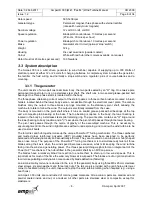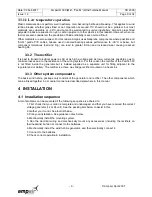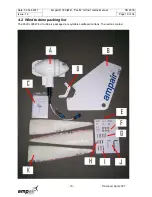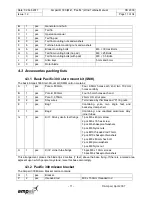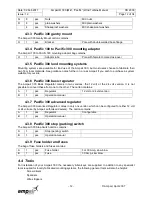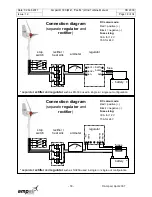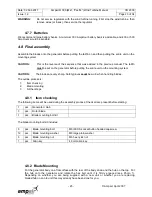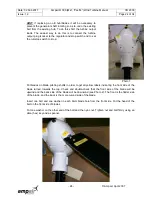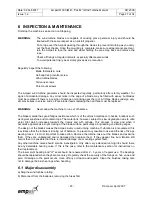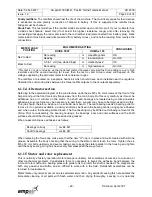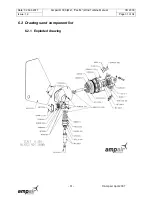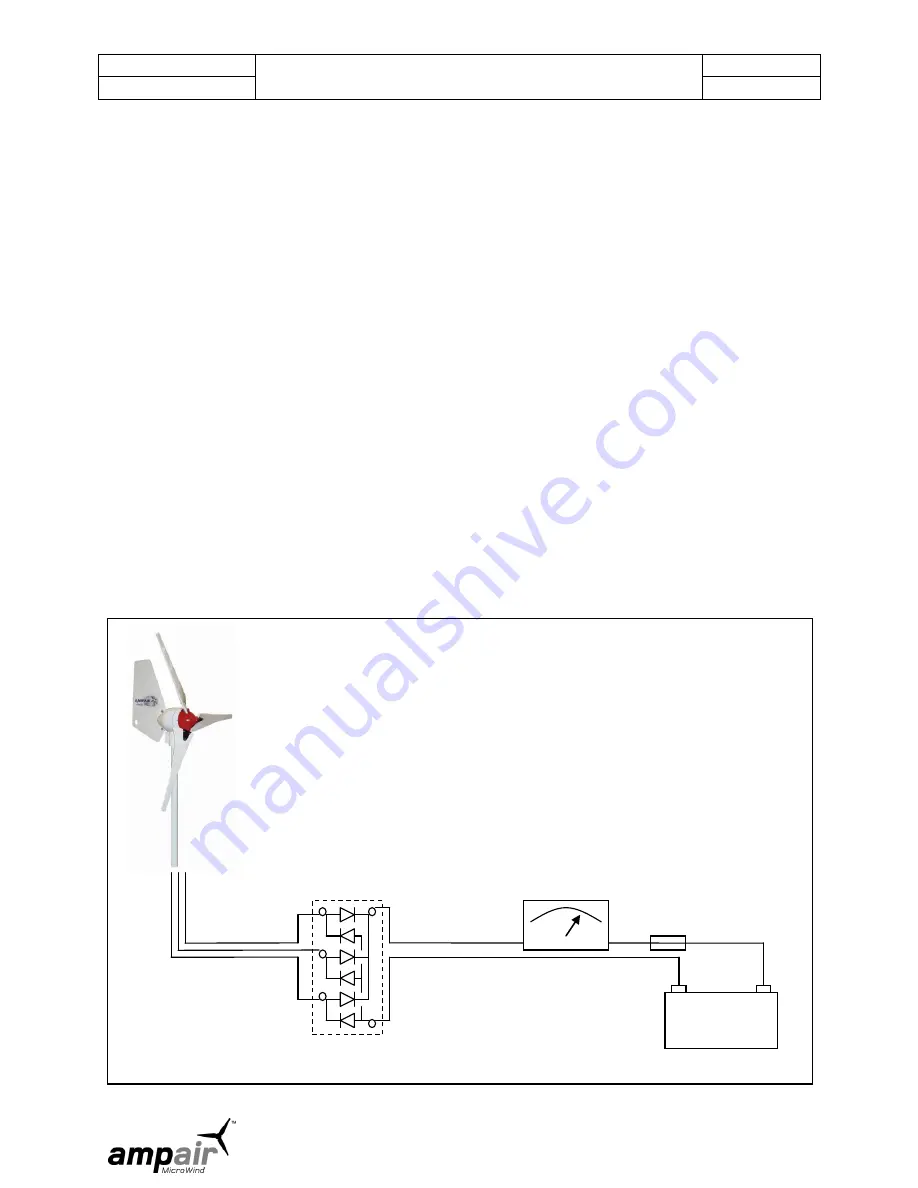
Date: 02 Feb 2011
Ampair ® 300 (Mk1, “Pacific”) Wind Turbine Manual
CD 2300
Issue: 1.2
Page 21 of 34
- 21 -
© Ampair, April 2007
turbine should be allowed to keep running, or if possible tied to its mast
–
never set the ‘stop’ switch to
short in these conditions as your turbine may be damaged.
4.7.4 Ammeter
We recommend installing a basic ammeter so as to monitor the performance of the system. It should be
wired in series (assuming it to be of the internal shunt variety) with one line, normally the positive. This will
allow the machine output to be seen at all times. As shown, the positive (+) connection of the ammeter is
made to the generator, whilst the negative (-) is made to the battery. It is best to connect the ammeter in
the section of cable between the rectifier and the regulator as otherwise the voltage drop across the
ammeter prevents the regulator seeing the battery voltage. This point is particularly important if a poor
quality ammeter is fitted. It does not apply if 'sense' wires are used.
WARNING:
Never connect an ammeter across the supply.
4.7.5 Rectifiers
The purpose of a rectifier is to convert the three phase alternating current (AC) of the turbine to direct
current (DC) that is useful to the battery. The rectifier may either be incorporated within the regulator or
mounted separately. The advantage of incorporating it in the regulator is that wiring is easier and it is a
sealed unit. The advantage of keeping them as separate components is that the regulator is more likely to
fail than the rectifier, and without a rectifier the turbine is useless. So a turbine with a separate rectifier can
be manually regulated in case of a regulator failure.
A separate rectifier should be mounted near the regulator and/or the battery. It should be mounted on a
heat sink (supplied with Ampair rectifiers) and connected as shown in the diagram below.
battery
+
-
fuse
ammeter
DC colour code:
Red = positive (+)
Black = negative (-)
Fuse rating:
40 A for 12 V
20A for 24 V
rectifier /
heat sink
*separate
rectifier
with no other components
Connection diagram
(
rectifier only
)
three
phase
AC
DC


